Beyond Roman-ness
Tuesday, 4 February 2025
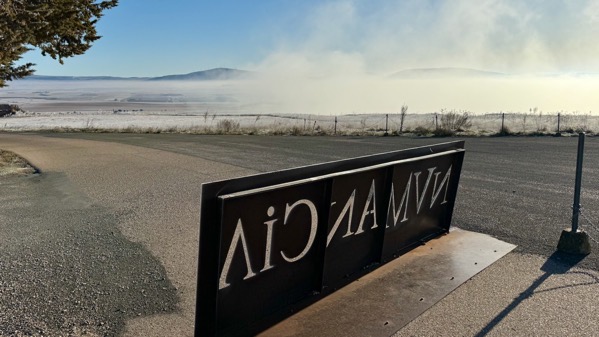
Today’s first stop was Numancia, one of the many locations that had pre-CeltIberian settlement, then CeltIberian, then a big rehab/redo by the Romans (who took it in 133 BC). As an additional treat, clouds brought moisture that the temperature converted into ice crystals.
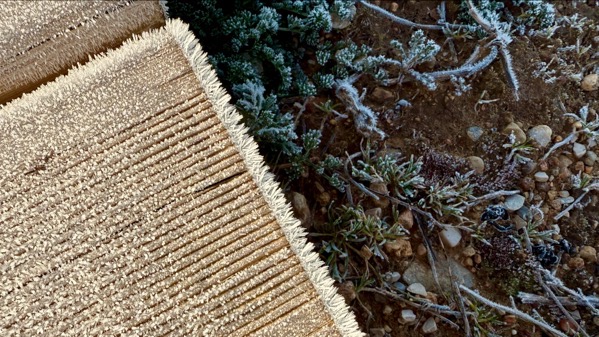
Need I mention that we walked carefully?
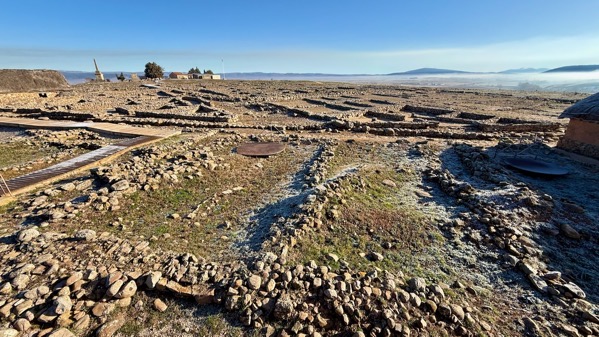
Walls, hence occupation, seemingly go on forever.
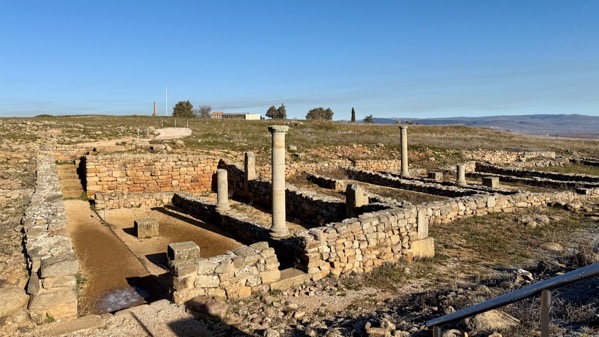
A fancier dwelling….
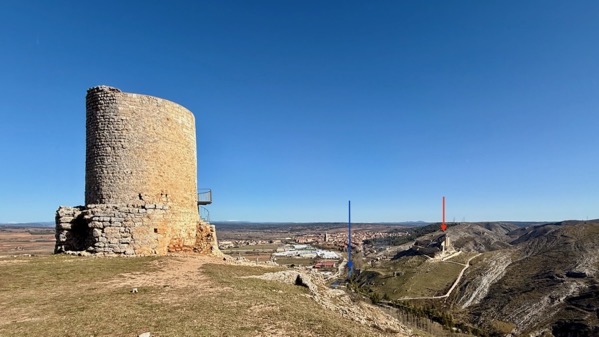
On to Uxama. This tower dates to the al-Andalusian period, when Arabs controlled most of the peninsula, including this area. They built many watch-towers to consolidate and maintain their power. It worked for generations…until it didn’t. The castle to the right (red arrow) dates to the 10th–11th C, with later modifications. The river in between (blue arrow) is the Ucero.
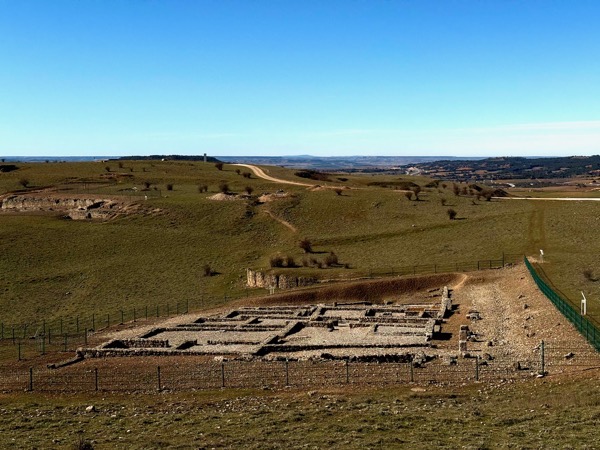
Uxama is better known as a Roman city. If all this area had buildings, it was a very large city (I am not sure that it did). This excavated area is between the major hilltops; this view is to the southwest.
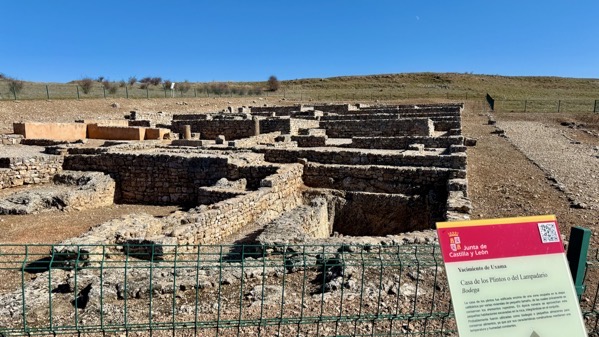
The domestic complex in this corner of this area includes and underground store-room (far right; bodega in Spanish).
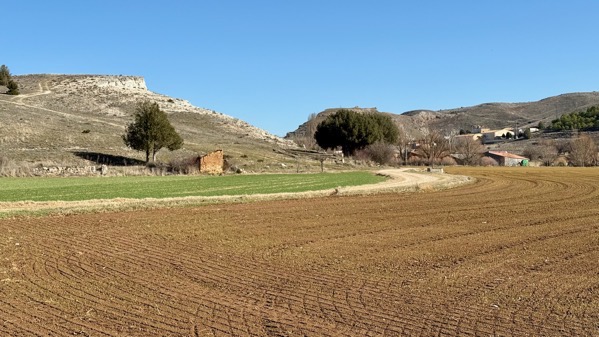
We left the Roman world behind and checked out the Riaza valley near Montejo.
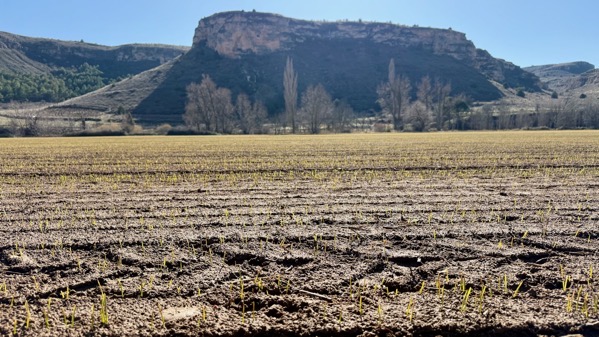
I’m guessing this is wheat. I’m guessing it’s doing pretty well. We’ve been seeing large piles of bales of wheat straw, just rotting…it appears they bale it with no market…is there a subsidy involved? Just trying to figure out the political economy….
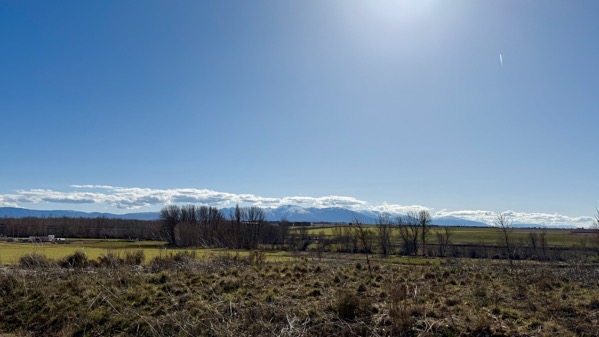
See those lovely mountains below the narrow cloud layer? Tonight’s room is in a tiny village in their foothills.
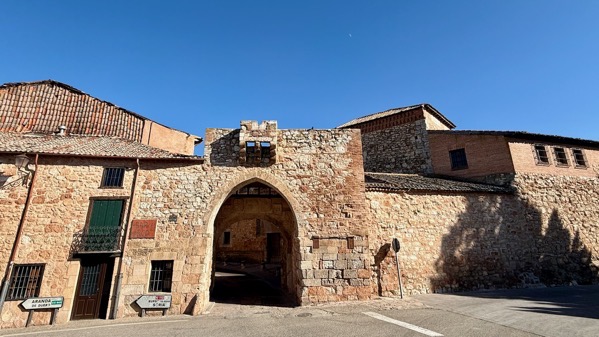
We motored through this Medieval gate to check out central Ayllón.
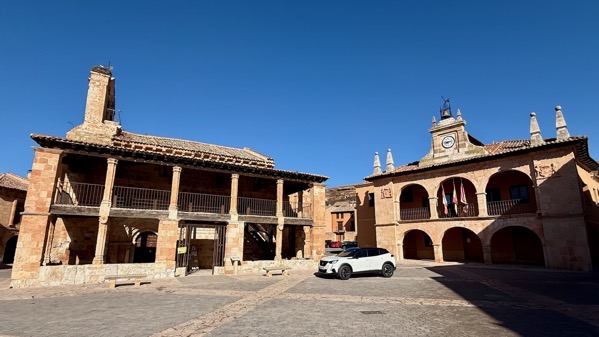
Two civic-ceremonial buildings on the mostly Medieval main plaza…. I think the one on the left was a church, and perhaps still is, but the signs relate to non-religious usage.
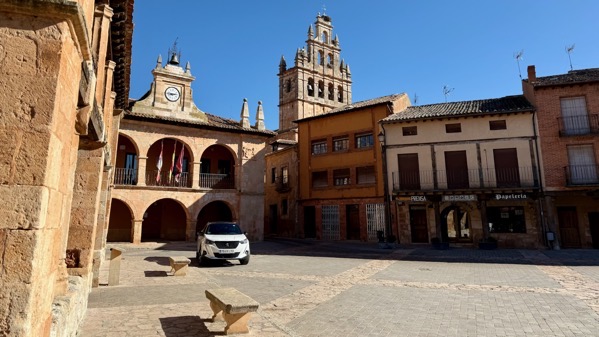
A different view of this same end of the Plaza Major.
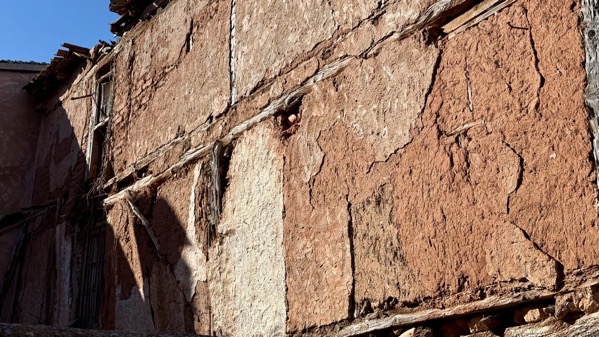
Construction detail…showing beams embedded in soft brick and adobe-type wall materials.
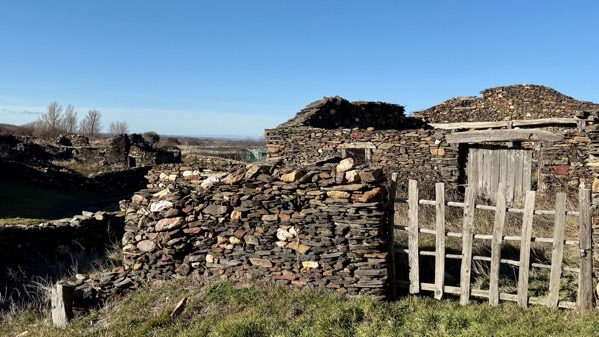
In contrast, this is the building material of the small village we’re staying in. I’m calling it slate.
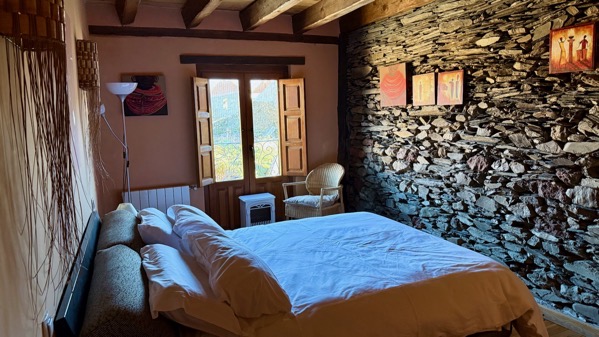
It’s even visible on one wall of our lovely room.